Results: Notorious Cursed Diamonds
Published on 08/13/2016
QUESTIONS
GO to COMMENTS
Comments
1.
1.
The Hortensia Diamond: This notorious diamond also has a Napoleonic connection: it was named for Hortense, the daughter of Napoleon's stepchild, the Empress Josephine. The Hortensia is twenty carats in size, with a pale coral cast. This diamond also disappeared, along with other French Crown Jewels, during the theft that took place in 1792. It was later recovered, along with the others, only to be stolen again in 1830. After the theft, the diamond was rapidly located and returned to its rightful owner. This diamond has a crack along its pavilion, unlike the other diamonds on our list. However, it is so steeped in French history and Napoleonic legend, that it retains its pricelessness despite the flaw. The stone now rests in the Louvre, a glittering symbol of France and of the courage of Napoleon, with whom it will always be linked. Are you familiar with these facts for the Hortensia Diamond?
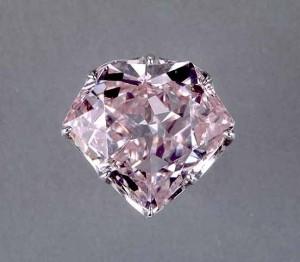
Yes
8%
154 votes
No
79%
1507 votes
Undecided
4%
72 votes
Not Applicable
9%
181 votes
2.
2.
The Darya-ye Noor Diamond: This diamond has some other romantic names: it is also referred to as the River or Light, or the Ocean of Light. This pale-rose colored diamond has a carat weight of 182, and it is an important addition to the Crown Jewels of Iran. This diamond was discovered in India, and it has remained there, in the ownership of mughal emperors. As it was passed down from generation to generation, it was eventually adopted as an armband decoration by the reigning Nasser-Al Din Shah Qajar. Various members of Indian royalty would adopt the gem to adorn their headpieces or clothing over the years: when not in use, it remained carefully hidden in the Golestan Palace. Are you familiar with these facts for the Darya-ye Noor Diamond?
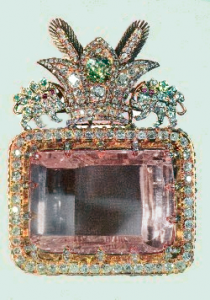
Yes
6%
119 votes
No
78%
1490 votes
Undecided
4%
86 votes
Not Applicable
11%
219 votes
3.
3.
The Eureka Diamond: This diamond was the first ever discovered in South Africa, one of the world's most prolific sources of diamonds. The diamond was found by a young boy, while he worked as a shepherd, along the shores of Hopetown's Orange River. This diamond weighed in at 231 carats before being faceted. The Eureka diamond eventually traveled to England for the inspection of Queen Victoria at Windsor Castle. This famous diamond, like many on our list, was destined to change owners many time, before being purchased by the diamond conglomerate, De Beers, in 1967; it is now on permanent display at the Kimberly Museum in South Africa, where it remains a symbol of one of South Africa's most lucrative national resources. If you had the chance would you like to see the Eureka Diamond at the Kimberly Museum in South Africa?
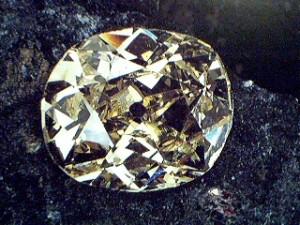
Yes
31%
597 votes
No
43%
826 votes
Undecided
13%
243 votes
Not Applicable
13%
248 votes
4.
4.
The Dresden Green: This extraordinary and rare pear-shaped stone weighs in at 40.7- carats, and is named for the capital of Saxony: its unique, deep-green color sets it apart. The Dresden Green came from India, and it was sold to Frederick Augustus II, son of the ruler of Saxony, Frederick Augustus I. Known as Augustus the Strong, Frederick's father commissioned the construction of many fine buildings in Dresden, and filled them with all manner of glorious art treasures he collected from around the world. Although Frederick Augustus I admired the diamond for years beforehand, Frederick Augustus II was the first to actually own it. The Dresden continued to be passed through royal ownership and admired for its flawless, emerald-green hue. It currently rests in the Albertinium Museum in Dresden: it was once displayed alongside the Hope Diamond at the Smithsonian Museum, at the request of noted jeweler Harry Winston, who felt that the Dresden was the only other stone in the world that could hold a candle to the Hope Diamond. If you had the chance would you like to see the Dresden Green at the Albertinium Museum?
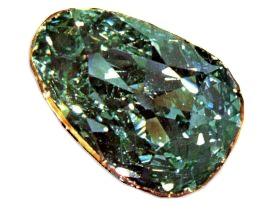
Yes
33%
641 votes
No
40%
757 votes
Undecided
14%
270 votes
Not Applicable
13%
246 votes
5.
5.
The Hope Diamond: This diamond is surrounded by legend and history. Some believed that this huge, deep-blue diamond, which came from India, was cursed and would bring bad luck or even death to its wearer. The first famous owner of the Hope Diamond was Louis XIV, the King of France. He bought the diamond from a French gem merchant named Jean Baptiste Tavernier, and its initial size was a staggering 112 3/16 carats. Louis chose to have the stone cut down to 67 1/8 carats, for use in the French Crown Jewels. The second owner was the next King of France, Louis XV, who reset the diamond in another royal jewelry piece, the Emblem of the Golden Fleece. During the French Revolution, the diamond was stolen during the looting and it did not surface again for 20 years. In 1812, the diamond reappeared in England under mysterious circumstances, and was snapped up by a wealthy collector, Philip Henry Hope. It remained in his family until it was sold again, and for years afterward, the Hope Diamond bounced back and forth between collectors. Evelyn Walsh Mclean purchased the diamond in 1912: again, it was reduced and re-cut, this time to 45.52 carats, to suit Walsh's taste. She relished tales of the Hope Diamond curse, even thought they were unfounded, as it pleased her to own such a notorious gem. She was rumored to keep the stone within the cushions of her sofa as a hiding place. After her passing, the famed jeweler Harry Winston bought the Hope Diamond and donated it to the Smithsonian Museum, and, from its origins deep with the earth of India, over a billion years ago, it now belongs to the American people. Are you familiar with these facts for the Hope Diamond (the most notorious diamond ever)?
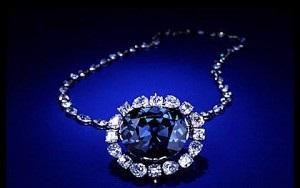
Yes
28%
535 votes
No
53%
1013 votes
Undecided
7%
143 votes
Not Applicable
12%
223 votes
COMMENTS


